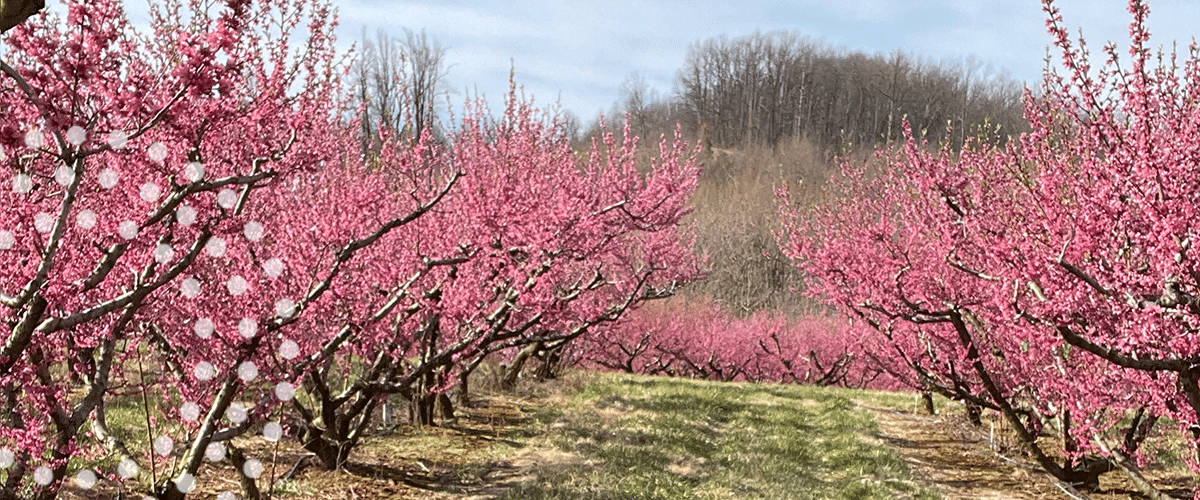6 Things Growers Should Keep in Mind with the Arrival of Spring >>

Spring has finally arrived for farmers across the country. This highly anticipated season opens up a time of new growth and field preparation.
Farmers use springtime to decide what crops to plant and when to plant them. Fertilizer recommendations also come into play to supply crops with the nutrients they need. Each crop has its own set of fertilizer preferences. Many other factors such as soil type will influence the selection of the best fertilizer. Therefore, soil testing during the spring is beneficial to maintaining soil health and determining how to prolong nutrient availability.
Much of the springtime is dedicated to planning. Agriculture is a comprehensive career path that requires attention 365 days a year. Spring allows people with differing responsibilities in the industry to come together and improve farm production.
See, below, six things growers should keep in mind with the arrival of spring:
1.Weather Forecast
This spring, farmers have seen the end to the two and a half year long climate pattern of the La Niña. La Niñas usually bring dry, warmer weather to the southern US and warmer temperatures to the north.
The US is juggling with the possibility of El Niño weather patterns forming towards the end of summer. Compared to the La Niña, El Niños bring the opposite climate conditions to the north and the south. The north may have warmer, drier weather and the south will receive more rain. However, despite the many available tools that are used to predict the weather, there is no way to know for sure.
Here are a few predictions from the Old Farmer’s Almanac for the main ag regions:
- For the Midwest, the publication projects a few rainy periods and relatively normal temperatures for spring.
- In true Northeast fashion, the region will have chilly weather and plentiful rain.
- As for the Southeast, spring should entail sunny days and light showers.
2.Commodity Prices
Similar to other industries, agricultural commodities are struggling to stay afloat in such a challenging economy with many stocks fixated in the negatives on the daily. Agricultural economists project that a recession is on the horizon.
According to the USDA, forecasted net farm profits have decreased by about 15% since last year. The estimated loss in income amounts to a whopping $25.6 billion for farms across the country. These numbers reflect in growers’ farming practices as they turn to lower-cost methods.
3.Fertilizer Prices
Surprisingly, fertilizer prices now are minorly decreasing from where they once were a year ago. Based on the Commodity Market Report, fertilizers have decreased in price by about 15%. Despite the small change, even just 15% can make a large difference in a farming operation.
A solid approach to fertilizing fields is determining what the exact fertilizer recommendations for the type of crop and understanding the various mechanisms of the soil. Ultimately, farmers will save money and time by planning ahead.
4.Prepping the Soil
It is recommended that farmers perform soil tests in the late summer and fall due to the adequate levels of potassium remaining in the soil. If a farmer samples the soil out of these times, they run the risk of receiving inaccurate results for potassium nutrient availability.
Building a hardy soil is key to maintaining a sustainable farming operation. The soil is a body of its own made up of an intricate network of living and non-living organisms. Cover cropping, no-till systems, and crop rotation can help support the mechanisms of the soil.
5.Prepping the Seeds
Thanks to modern agricultural innovation, farmers have access to an extensive selection of crop varieties. Certain varieties are more equipped than others to handle different soil types, climates, and regional needs. For example: A sea island cotton variety will thrive in coastal regions but struggle in inland areas.
Seed treatments equip the seed to take on disease and stresses already found in the soil. Germination is a delicate time for the plant to begin its life and can heavily influence how the crop performs over time.
6.Pest Management
Integrated Pest Management brings a holistic approach to controlling pests in an economical and environmentally friendly way. Through identification, monitoring, prevention, and action, IPM utilizes multiple avenues to keep biotic stressors at bay. The goal of IPM is to attack all areas of a potential pest invasion. Otherwise, an infected field can be quite challenging to undo.
The spring is an exciting time for farmers to set their fields up for success. We wish all growers a prolific year!
Talk to one of our experts in case you need assistance.

Amber Cassell
Agronomic Technical Consultant
